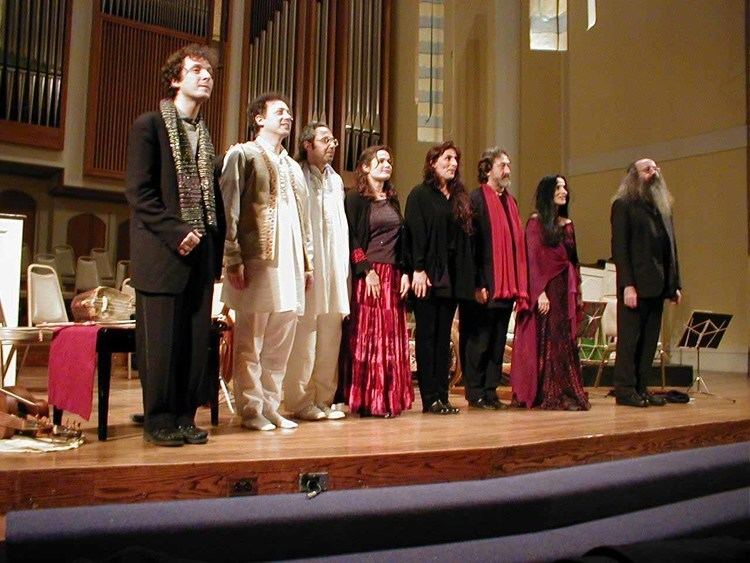 | ||
Record labels Universal Music LLC, Warner Classics, Alia Vox Awards Grammy Award for Best Chamber Music/Small Ensemble Performance Albums Estampies & danses royales, Mare Nostrum, Orient‑Occident 1200‑1700, Esprit d’Arménie, Lachrimæ Caravaggio | ||
Hespèrion XXI is an international early music ensemble. The group was formed in Basel, Switzerland in 1974 as Hespèrion XX by Spanish musical director Jordi Savall (bowed string instruments, particularly the viola da gamba), his wife Montserrat Figueras (soprano), Lorenzo Alpert (flute, percussion), and Hopkinson Smith (plucked string instruments). The group changed its name to Hesperion XXI at the beginning of the 21st century. The name "Hespèrion" is derived from a word in Classical Greek which referred to the people of the Italian and Iberian peninsulas.
Contents
The ensemble is noted for its scholarship in early music — especially the music of 16th and 17th century Spain. Their performance practice is noted for the liberal use of improvisation around the basic melodic and rhythmic structures of the early pieces, resulting in great emotional intimacy and immediacy.
Jordi savall hesp rion xxi folias criollas peru
Awards
As Hespèrion XX
Note: The name of composer Juan del Encina (or Enzina) is spelled below as printed on the individual CD covers.
As Hespèrion XXI
Songs
Lamento della ninfa2008
Stella splendens in monte1979
Una sañosa porfíaRomances & Villancicos · 1991
